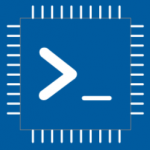Advertisement
Not a member of Pastebin yet?
Sign Up,
it unlocks many cool features!
- /********* Pleasedontcode.com **********
- Pleasedontcode thanks you for automatic code generation! Enjoy your code!
- - Terms and Conditions:
- You have a non-exclusive, revocable, worldwide, royalty-free license
- for personal and commercial use. Attribution is optional; modifications
- are allowed, but you're responsible for code maintenance. We're not
- liable for any loss or damage. For full terms,
- please visit pleasedontcode.com/termsandconditions.
- - Project: "Servo Control"
- - Source Code NOT compiled for: Arduino Uno
- - Source Code created on: 2024-06-23 14:31:31
- ********* Pleasedontcode.com **********/
- /****** SYSTEM REQUIREMENTS *****/
- /****** SYSTEM REQUIREMENT 1 *****/
- /* When cutton is latched, servos move 90 degrees. */
- /* When button is released, servos return to 0 */
- /* degrees */
- /****** END SYSTEM REQUIREMENTS *****/
- /****** DEFINITION OF LIBRARIES *****/
- #include <EasyButton.h> // https://github.com/evert-arias/EasyButton
- #include <Servo.h> // https://github.com/arduino-libraries/Servo
- /****** FUNCTION PROTOTYPES *****/
- void setup(void);
- void loop(void);
- void updateOutputs();
- void onPressed(); // Callback function for button press
- void onReleased(); // Callback function for button release
- /***** DEFINITION OF DIGITAL INPUT PINS *****/
- const uint8_t Button_PushButton_PIN_D2 = 2;
- /***** DEFINITION OF PWM OUTPUT PINS *****/
- const uint8_t Servo1_Servomotor_PWMSignal_PIN_D3 = 3;
- const uint8_t Servo2_Servomotor_PWMSignal_PIN_D5 = 5;
- /***** DEFINITION OF OUTPUT RAW VARIABLES *****/
- /***** used to store raw data *****/
- uint8_t Servo1_Servomotor_PWMSignal_PIN_D3_rawData = 0;
- uint8_t Servo2_Servomotor_PWMSignal_PIN_D5_rawData = 0;
- /***** DEFINITION OF OUTPUT PHYSICAL VARIABLES *****/
- /***** used to store data after characteristic curve transformation *****/
- float Servo1_Servomotor_PWMSignal_PIN_D3_phyData = 0.0;
- float Servo2_Servomotor_PWMSignal_PIN_D5_phyData = 0.0;
- /****** DEFINITION OF LIBRARIES CLASS INSTANCES*****/
- EasyButton button(Button_PushButton_PIN_D2); // Initialize EasyButton instance
- Servo servo1; // Initialize Servo instance for Servo1
- Servo servo2; // Initialize Servo instance for Servo2
- // Callback function to be called when the button is pressed.
- void onPressed() {
- Serial.println("Button pressed");
- Servo1_Servomotor_PWMSignal_PIN_D3_rawData = 90; // Move servos to 90 degrees
- Servo2_Servomotor_PWMSignal_PIN_D5_rawData = 90;
- }
- // Callback function to be called when the button is released.
- void onReleased() {
- Serial.println("Button released");
- Servo1_Servomotor_PWMSignal_PIN_D3_rawData = 0; // Move servos back to 0 degrees
- Servo2_Servomotor_PWMSignal_PIN_D5_rawData = 0;
- }
- void setup(void) {
- // put your setup code here, to run once:
- Serial.begin(115200);
- Serial.println();
- Serial.println(">>> EasyButton and Servo example <<<");
- pinMode(Button_PushButton_PIN_D2, INPUT_PULLUP);
- // Attach servos to the corresponding pins
- servo1.attach(Servo1_Servomotor_PWMSignal_PIN_D3);
- servo2.attach(Servo2_Servomotor_PWMSignal_PIN_D5);
- // Initialize the button
- button.begin();
- // Add the callback function to be called when the button is pressed.
- button.onPressed(onPressed);
- // Add the callback function to be called when the button is released.
- button.onReleased(onReleased);
- }
- void loop(void) {
- // put your main code here, to run repeatedly:
- button.read(); // Continuously read the status of the button
- updateOutputs(); // Refresh output data
- }
- void updateOutputs() {
- // Update servo positions based on raw data
- servo1.write(Servo1_Servomotor_PWMSignal_PIN_D3_rawData);
- servo2.write(Servo2_Servomotor_PWMSignal_PIN_D5_rawData);
- }
- /* END CODE */
Advertisement
Add Comment
Please, Sign In to add comment
Advertisement

